Cerebral palsy (CP) in children
The experts at Children’s Health℠ are known throughout the world for their ability to help children like yours with cerebral palsy (ce·re·bral - pal·sy) or CP. Our team provides the most advanced care, therapies and procedures for children with cerebral palsy in our region. And your child will have access to all the different specialists they may need right here, under one roof.
What is cerebral palsy (CP) in children?
Cerebral palsy (CP) in children is due to a problem with the brain that causes trouble with movement, muscle tone and posture. It is a lifelong condition that does not go away. The brain problem itself won’t change or get worse over time. However, your child’s symptoms may change over time.
Cerebral palsy (also called CP) is the most common motor disability in childhood. It can be caused by a problem with the way a baby’s brain developed, or by an injury to the brain before, during or shortly after a baby is born (this is called the perinatal period). It is often diagnosed between ages one and two, when delays with motor function become more obvious.
About three in 1,000 children in the U.S. are diagnosed with CP. Many of them have mild symptoms and participate in typical activities even though they have pediatric cerebral palsy (CP). Others are more severely affected.
Static encephalopathy is another term you may hear to describe pediatric cerebral palsy (CP).
Static means the condition is unchanging.
Encephalopathy refers to a problem with the way the brain functions.
What are the different types of cerebral palsy (CP) in children?
There are many types of pediatric cerebral palsy (CP), and different doctors have different ways to classify or categorize it. This can be frustrating for parents.
Often, pediatric cerebral palsy (CP) is defined by the location of your child’s primary symptoms and by the cause (if known):
Monoplegia describes weakness that affects one of your child’s limbs.
Diplegia is when two limbs are affected (usually the legs).
Hemiplegia is when weakness affects one side of your child’s body.
Triplegia is when three of your child’s limbs are affected.
Quadriplegia is when all four of your child’s limbs are affected. Often one side is more strongly affected than the other.
Types of cerebral palsy (CP) include:
Spastic cerebral palsy (CP) - Children with spastic cerebral palsy (CP) often experience jerky or stiff movements. It is caused by damage to the parts of the brain that control voluntary movement (the motor cortex) and that relay signals to the muscles (the pyramidal tracts).
A problem on the right side of the brain causes damage on the left side of the body, and vice-versa. Spastic cerebral palsy (CP) is the most common type of CP. Between 70% to 80% of people who have CP have this type.
Athetoid cerebral palsy (CP) is when your child has decreased muscle tone (hypotonia) followed by too much muscle tone (hypertonia), and then these symptoms will repeat. This results in involuntary movement of the face, torso and limbs. Fewer than 10% of children with CP have this type. Athetoid cerebral palsy (CP) is sometimes called dyskinetic cerebral palsy.
Athetoid cerebral palsy is caused by damage to the parts of the brain that coordinate voluntary motor functions (the basal ganglia), balance and coordination (the cerebellum). It is sometimes divided into categories that describe the symptoms a child is having.
Ataxic cerebral palsy is caused by damage to the part of the brain that controls balance and coordination (the cerebellum). It is the least common type of cerebral palsy. Tremors are a common symptom of this type of CP.
Hypotonic cerebral palsy is also known as atonic cerebral palsy. It causes low muscle tone, or floppiness, which can lead to delay in developing motor milestones. Fewer than 10% of children with CP have hypotonic CP.
Mixed cerebral palsy is when damage to the developing brain affects more than one area of the brain and affects motor function.
What are the signs and symptoms of cerebral palsy (CP) in children?
The signs and symptoms of cerebral palsy (CP) vary depending on which part of your child’s brain has a problem, and how severely they are affected.
Common signs and symptoms can include:
Tight or inflexible muscles (known as increased muscle tone or hypertonia)
Muscles that are floppy or too flexible (known as decreased muscle tone or hypotonia)
Random, uncontrollable muscle movements and contractions
Weakness in certain parts of their body
Problems with balance and coordination
Difficulty walking
Problems with things like opening and closing their hands
Less common signs include:
Problems speaking and communicating
Problems with intellectual functioning
Trouble feeling sensation
Feeding issues
Bowel and bladder problems
How is cerebral palsy (CP) in children diagnosed?
Pediatric cerebral palsy (CP) is often diagnosed between ages one and two, when delays in meeting developmental milestones become clear.
Your doctor will do a physical exam and ask you about your child’s medical history, and what you have noticed about your child’s movement. They will also ask about risk factors for CP, such as premature birth, low birth weight or a difficult delivery.
Sometimes a brain MRI is done to see if there are problems with the structure of your child’s brain. They will also look for evidence of an injury that might be causing the CP. Very young children may have a head ultrasound rather than an MRI. It’s important to know that the imaging doesn’t always show evidence of CP. Many people with CP have imaging that doesn’t show anything unusual.
What causes cerebral palsy (CP) in children?
We know that cerebral palsy (CP) in children is caused by a problem with the way a baby’s brain developed during pregnancy. Or the cause can be an injury to the brain before, during or shortly after birth. But we often don’t know what caused the brain problem.
Risk factors
How is cerebral palsy (CP) in children treated?
Specialists
If your child has cerebral palsy (CP), they will see more than one specialist. Who they see will depend on what their symptoms are and how severely they are affected, but most children with CP will see a neurologist.
The goal of treatments for cerebral palsy are to relieve your child’s symptoms, help them function as well as they are able, and prevent their symptoms from getting worse over time.
Treatment
The most common cerebral palsy treatments for children include:
Medication
Some children may need medicines to help improve their muscle tone or control their movements.
Surgery
Surgery can also be an option to improve your child’s ability to move or to improve the alignment in their legs, ankles, hips, arms or wrists.
Other specialists
Children with behavioral problems or intellectual disabilities may also see a developmental pediatrician, a neurodevelopmental disabilities specialist or a psychiatrist.
Referrals
We’ll give you referrals to any specialist you need and keep track of your child’s progress. You can get all of your child’s care at Children’s Health, so you don’t have to coordinate different clinics that aren’t used to working together.
Each child gets their own detailed, personal treatment plan to meet their needs. By offering the latest therapies and treatments, we give your child the best chance of living as full, active and independent a life as possible.
Cerebral palsy (CP) doctors and providers
Our team has extensive training and experience with diagnosing and treating cerebral palsy (CP) in children.
 Michael Dowling, MDPediatric Neurologist
Michael Dowling, MDPediatric Neurologist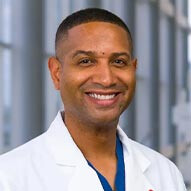 Romaine Johnson, MDPediatric Otolaryngologist (ENT)
Romaine Johnson, MDPediatric Otolaryngologist (ENT)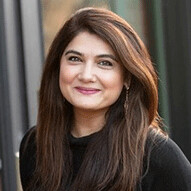 Saima Kayani, MDPediatric Neurologist
Saima Kayani, MDPediatric Neurologist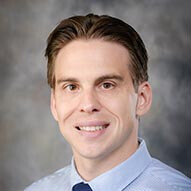 Eric Remster, MDPediatric Neurologist
Eric Remster, MDPediatric Neurologist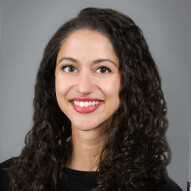 Lauren Sanchez, MDPediatric Neurologist
Lauren Sanchez, MDPediatric Neurologist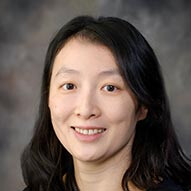 Cynthia Wang, MDPediatric Neurologist
Cynthia Wang, MDPediatric Neurologist